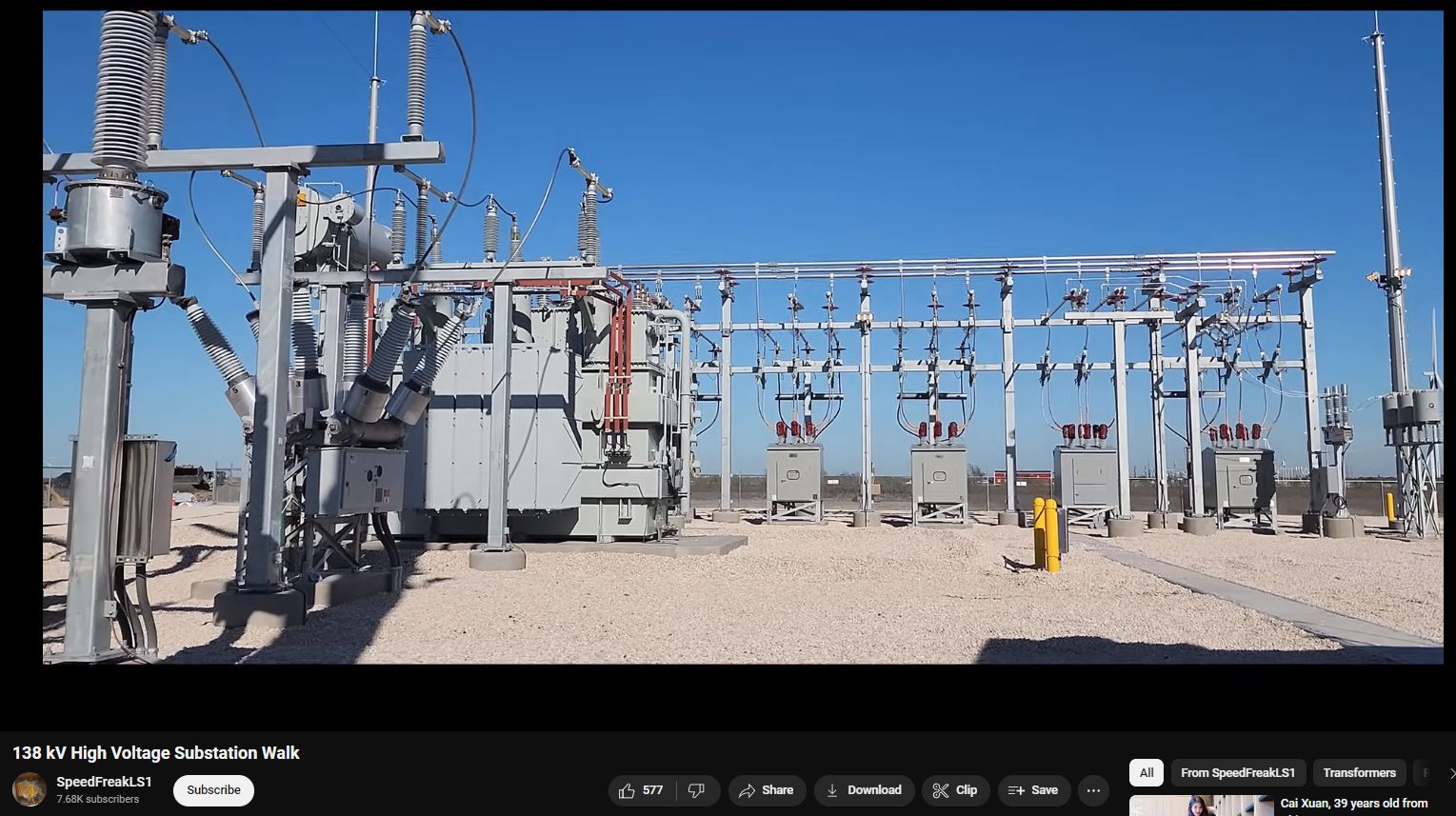https://www.youtube.com/watch?v=-RBp8jOUA1U
CGPT
A 138 kV (kilovolt) power grid substation is a critical component of the electrical distribution network, serving as a key node in the transmission system to step down high-voltage electricity from the transmission lines to lower voltages suitable for distribution to homes, businesses, and other end users. Here’s a detailed look into the components, functions, and significance of a 138 kV substation:
### Components of a 138 kV Substation
– **Transformers**: The most critical components, transformers at these substations reduce the high transmission voltages (in this case, 138 kV) to lower levels (such as 69 kV, 34.5 kV, or lower) for distribution. Transformers can be of various types depending on their application, including step-down, step-up, and phase-shifting transformers.
– **Circuit Breakers**: High-voltage circuit breakers are used to interrupt the flow of electricity in the case of a fault or maintenance requirement, providing protection to the system and preventing damage.
– **Disconnect Switches**: These are used to safely isolate circuit breakers or other components for maintenance, allowing for parts of the substation to be de-energized without affecting the entire system.
– **Busbars**: Thick strips of copper or aluminum that conduct electricity within the substation, connecting different components like transformers, circuit breakers, and switches.
– **Protection and Control Equipment**: This includes relays, fuses, and control panels that monitor and control the operation of the substation, ensuring the safety and reliability of the power supply. Protection equipment is crucial for detecting abnormalities and initiating appropriate responses, such as tripping circuit breakers.
– **Capacitor Banks**: Used to improve the power factor of the distribution system, thus increasing efficiency by reducing reactive power flow and losses in the system.
### Functions and Operations
– **Voltage Transformation**: The primary function is to step down the high voltage for safe and efficient distribution to consumers.
– **System Protection**: Substations are equipped with various protection devices to detect and mitigate faults in the system, thereby protecting infrastructure and maintaining service reliability.
– **Load Switching**: Substations can switch loads between different power sources or lines to manage the distribution network effectively, especially during maintenance or emergencies.
– **Power Quality Improvement**: Equipment like capacitor banks and reactors are used to manage power quality issues, including voltage regulation and reactive power compensation.
### Significance in the Power Grid
– **Efficiency in Power Distribution**: By stepping down high-voltage power to lower voltage levels, substations facilitate the efficient distribution of electricity over long distances with minimal losses.
– **Reliability and Stability**: Substations play a crucial role in ensuring the reliability and stability of the power grid, allowing for the flexible operation and maintenance of the network without disrupting supply to consumers.
– **Scalability and Integration**: As demand grows or as new generation sources (like renewable energy projects) are integrated into the grid, substations can be upgraded or expanded to meet these needs, making them integral to the scalability of the power system.
### Challenges and Developments
Substations, including those operating at 138 kV, face challenges such as security threats (both physical and cyber), aging infrastructure, and the need to integrate with increasingly complex and decentralized power generation landscapes. Innovations in substation technology, including digital substations and the incorporation of advanced monitoring and control systems, are aimed at addressing these challenges, enhancing efficiency, and ensuring the continued reliability of the power grid.
